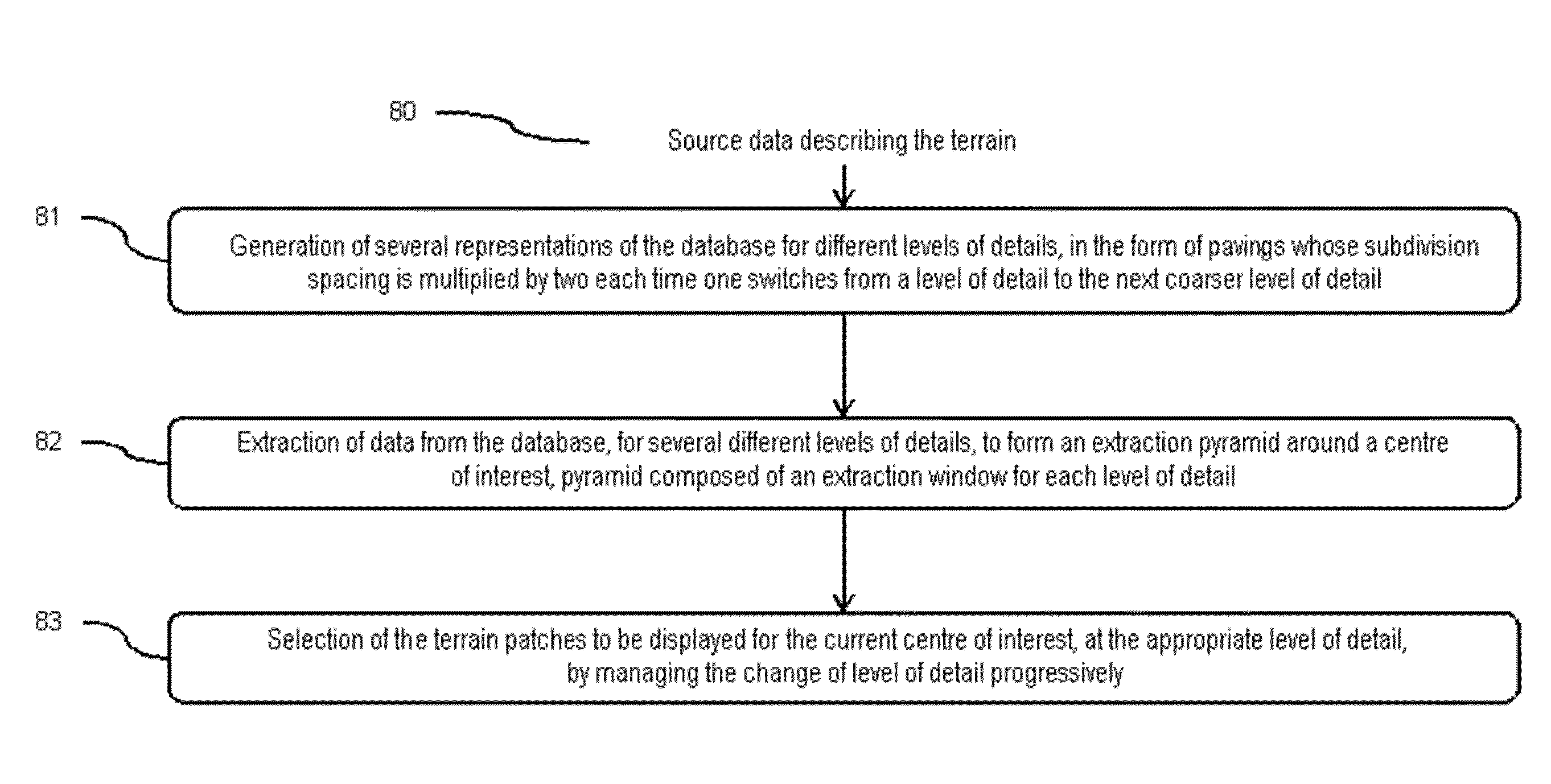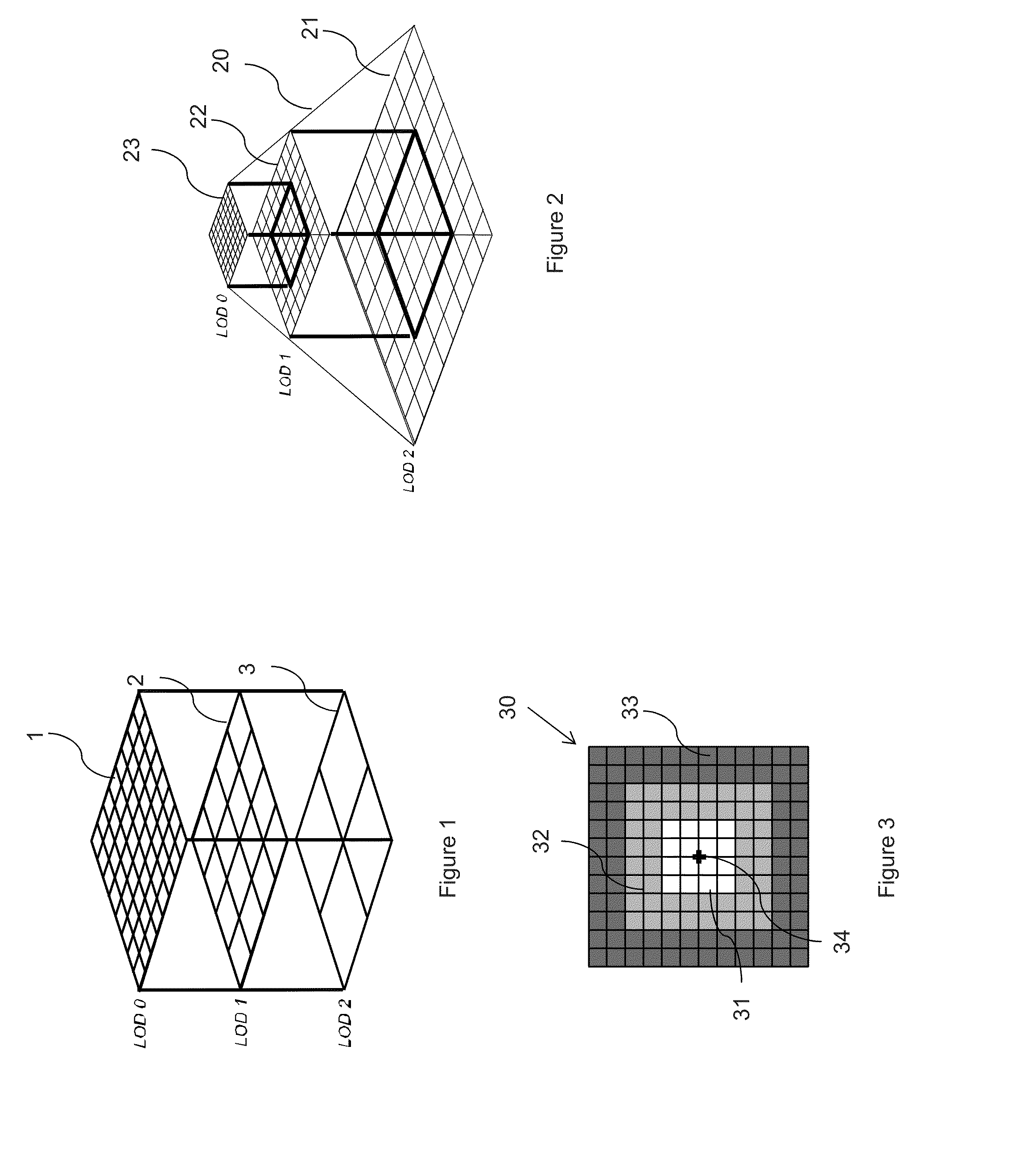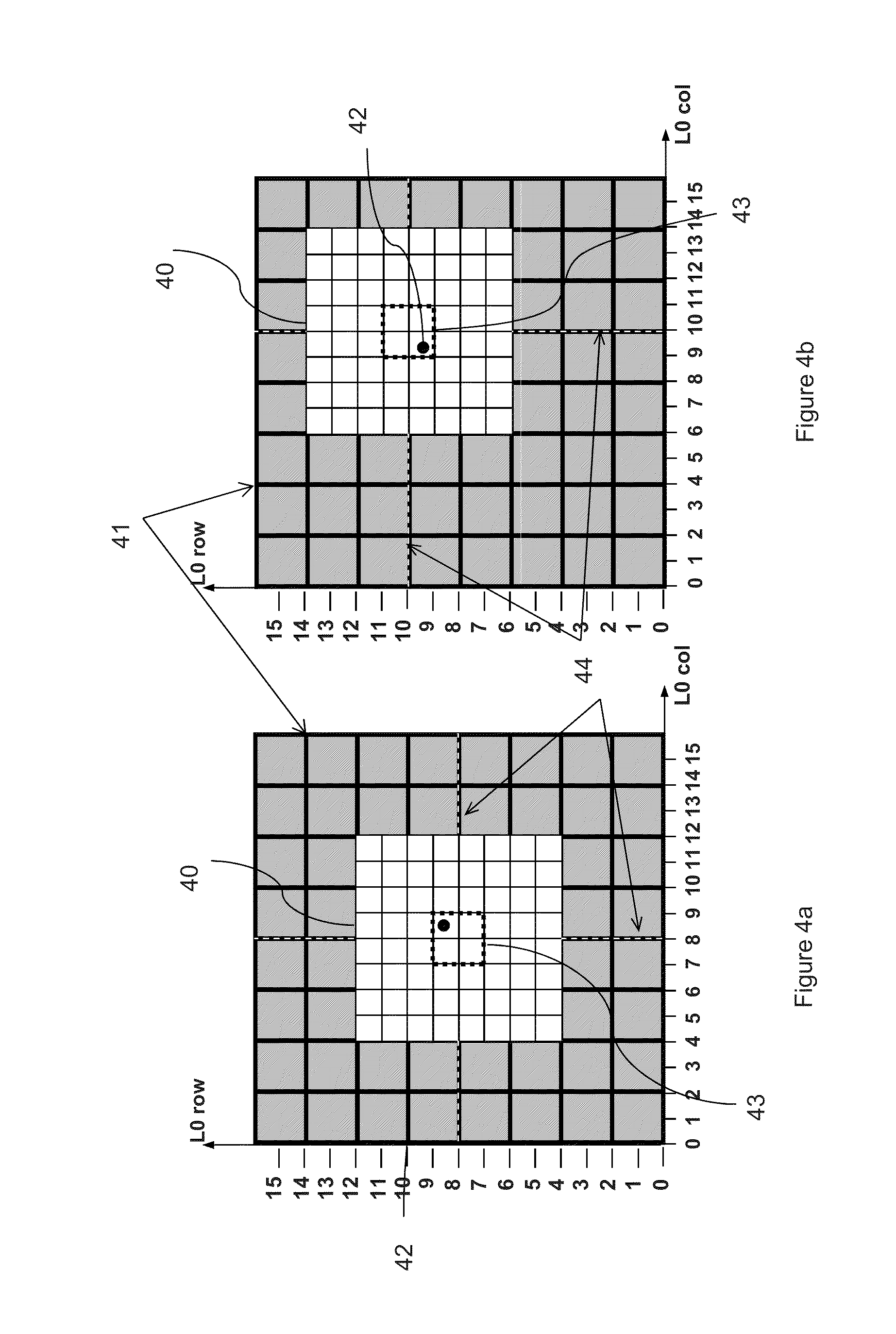Method of rendering a terrain stored in a massive database
a database and database technology, applied in the field of rendering a terrain stored in a massive database, can solve the problems of inability to work on massive databases with conventional database management and access tools, high computation costs, and complex utilization of massive databases, and achieve the highest possible level of detail
- Summary
- Abstract
- Description
- Claims
- Application Information
AI Technical Summary
Benefits of technology
Problems solved by technology
Method used
Image
Examples
Embodiment Construction
[0054]FIG. 1 represents an exemplary subdivision of a database into patches for several levels of details LOD0, LOD1, LOD2. LOD is an acronym for the expression Level Of Details.
[0055]The method according to the invention takes as input a description of terrain data stored in a massive database. The terrain data can notably be described in the database by means of one or more irregular meshes. These meshes can for example describe the relief of the terrain, as well as elements present on the terrain such as trees, buildings, highway maintenance elements, etc. A first step of the method according to the invention is a step of paving the database into tiles for several levels of different resolution. For example the paving can be analogous to the pavings used in clipmapping. The paving of the database can produce for example a first decomposition grid 1 of a terrain, for a first level of detail LOD0. The first grid 1 can be a square grid comprising eight rows and eight columns such as...
PUM
 Login to View More
Login to View More Abstract
Description
Claims
Application Information
 Login to View More
Login to View More - R&D
- Intellectual Property
- Life Sciences
- Materials
- Tech Scout
- Unparalleled Data Quality
- Higher Quality Content
- 60% Fewer Hallucinations
Browse by: Latest US Patents, China's latest patents, Technical Efficacy Thesaurus, Application Domain, Technology Topic, Popular Technical Reports.
© 2025 PatSnap. All rights reserved.Legal|Privacy policy|Modern Slavery Act Transparency Statement|Sitemap|About US| Contact US: help@patsnap.com



